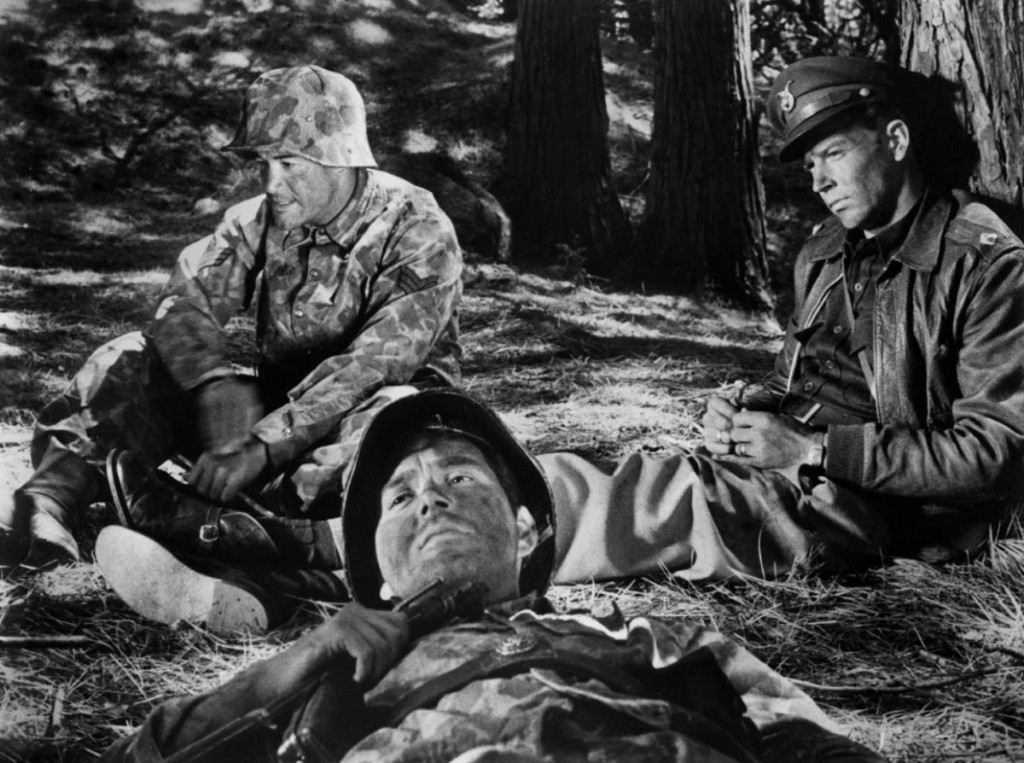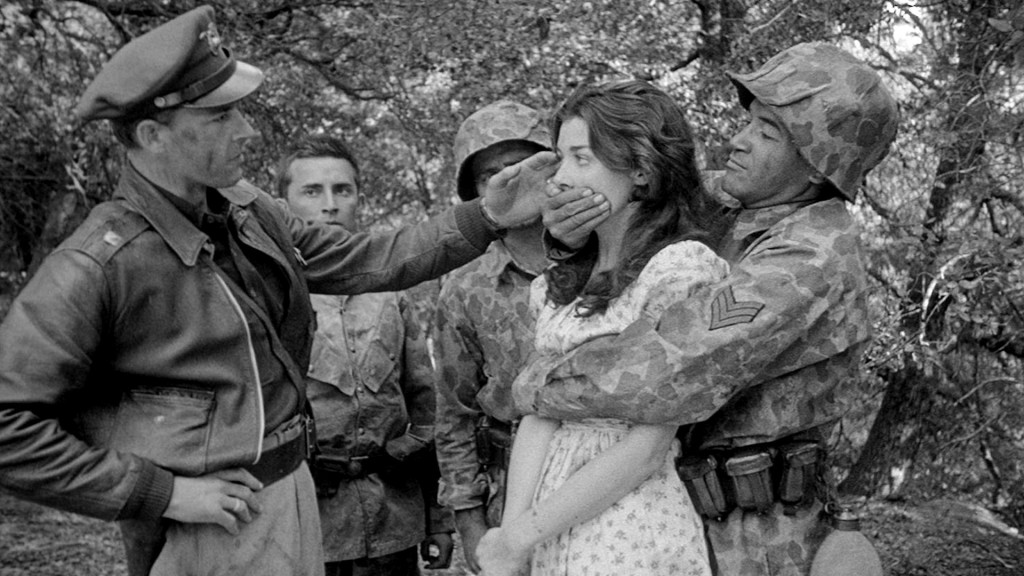Our guest blogger is hobbyist film and TV series reviewer and writer Harry Casey-Woodward:
Fear and Desire, 1953, dir Stanley Kubrick, cert 12, 3/5
Stanley Kubrick is one of my favourite directors, so I was rather excited when back in 2013 Eureka released his debut as part of their Masters of Cinema series on DVD. They even added, as special extras, three short documentaries Kubrick did, two of which are his earliest examples of film making. So you’ve got a nice little package of Kubrick gold if you’re a fan; the beginnings of a career that would span nearly fifty years. To be honest, we’re lucky to be able to watch Fear and Desire on DVD at all. Kubrick detested it so much he removed it from circulation in the 60s when he became more recognised, with only one print surviving in New York.
You can kind of see why. Kubrick referred to his first film as a ‘bumbling, amateur film exercise’ and to be honest that’s the impression I got before I even read that quote. The plot is a bit loose for a start. The film is set during an unknown war in an unknown country and focuses on four soldiers who are stranded behind enemy lines when their plane crashes. Their plan is to get to the river so they can raft it past the enemy and back to base. It sounds quite a straightforward plot, but Kubrick uses all his art cinema influences to give us a strange and striking one hour viewing experience.
As expected from Kubrick, the film is beautifully shot. It was filmed in a national park in California and Kubrick fully exploits the picturesque woodland and river scenery, even if it conflicts with his grim plot. Even though the film is black and white, it also boasts some impressive lighting, most of it natural. There is one scene in particular where the soldiers attack two sentries at their post at night. We get shots of half-lit angry men’s faces as they beat their foes to a pulp rapidly cut with close-ups of the enemies’ hands squeezing fragments of the bread and stew they were eating for supper. The result is an intense but bizarre and unrealistic fight scene which sums up the creative but naive ambition Kubrick applied for his first movie.
So while we can agree that Fear and Desire is not as stylistically or literally coherent as Kubrick’s later masterpieces, it still packs a lot into such a short running time. On one hand it’s got a typical war action storyline of GIs busting through enemy lines and attacking an enemy base which they discover nearby. On the other, there are elements that foreshadow the styles of modern anti-war classics like Apocalypse Now and even Kubrick’s later films like Full Metal Jacket by several decades. For one thing, Kubrick used stylish film techniques like poetic interior monologues to death, which the 1998 equally dreamy war epic The Thin Red Line also did with its parade of military characters.
There is also an episode in Fear and Desire where the four soldiers capture a native girl, which is also the plot for the 1989 Vietnam war film Casualties of War, in which five American soldiers kidnap and rape a Vietnamese girl. While the men of Fear and Desire don’t go that far, they express their desire for their captive. One who actually goes mad through some extreme form of PTSD (in a typically Kubrickian over-the-top performance foreshadowing Jack Nicholson in The Shining) kisses and presses his body on her when she’s tied to a tree. This scene was used to sell the movie as a sexploitation, which were all the rage in underground 1950s cinema. Randy audiences must have been quite disappointed when subjected to Kubrick’s dream-like war allegory.
The attitude towards war exhibited in Fear and Desire (which is carried on in other Kubrick films) is strikingly modern and pessimistic regarding 1950s American cinema. All the four soldiers want to do is survive and when they do take some military action in attacking the enemy base, the results are bittersweet. All four men are damaged in some way by their experiences. Though the film is short and a little disorganised, it has a surprisingly deep and haunting message about war’s senseless brutality.
But does the film stand up on its own apart from being Stanley Kubrick’s first film? Almost. It’s certainly not as good or cohesive as Kubrick’s later works and there are much stronger and more noteworthy films that came out at the time. The other short films on the DVD are a little interesting and a little dull. It’s best to view all the films on the disc as a worthy director stretching his wings, and Fear and Desire as an experimental indulgence in metaphors and literary references. However there was enough plot, good acting and filmmaking to keep me gripped. It’s a strange but beautiful gem, a little rough on the edges but with enough of an intoxicating gleam to draw me back into this absurd dream on war. It’s also noteworthy for being the first wholly independent US movie, for it was financed by donations from Kubrick’s family and friends. I’m just glad that they had faith in him and this restoration finally got release in the UK. Plus it’s short so if you hate it you don’t have to hate it for long.
[Quotes and background information from ‘No other country but the mind’ by James Naremore, an essay included with the DVD.]


Much obliged to you, this is cool! I play guitar. I’m in school in my subsequent year, and to save available energy for playing the drums, for bestessays I go to an online assistance https://uk.bestessays.com/write-my-assignment.html that composes expositions and any composed work for me. I’m exceptionally fulfilled – exposition without literary theft, on schedule, top caliber